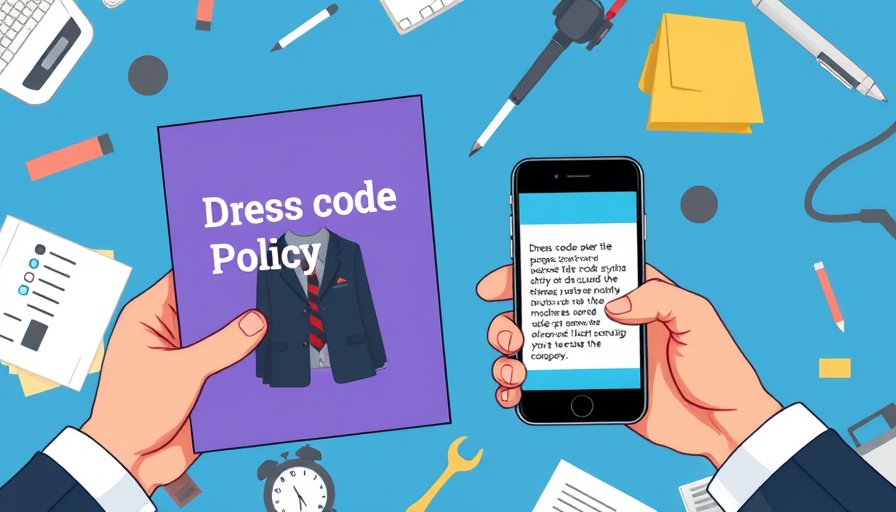
Understanding Dress Codes: A Double-Edged Sword for Employers
The recent legal challenges faced by Starbucks employees regarding the company's stringent dress code highlight a critical conversation among employers and employees alike: the balance between maintaining a professional image and ensuring employee welfare. When Scott Mannik, a shift supervisor at Starbucks, explained the financial burden associated with the new dress code, it served as a wake-up call to business owners, urging them to reassess their own policies.
The Starbucks Case: A Call for Reflection
Starbucks’ new dress code mandates that employees wear specific styles and colors, while also stipulating that they must fund their own attire. Employees from several states filed lawsuits against the company, claiming their rights were violated under state laws requiring reimbursement for uniforms that mainly benefit the employer. The case serves as a crucial reminder for all businesses to consider the implications of their dress code policies. Should businesses cover these expenses to avoid potential legal repercussions?
Historical Context: Dress Codes Through the Ages
Dress codes have undergone significant transformations over the decades. In the past, strict guidelines—like those of the 1980s IBM salesmen—required formal attire: pinstriped suits and polished shoes. Today, as many companies embrace a more casual style, the question arises: what is considered 'appropriate' attire in our diverse workplaces? Emerging tech firms often endorse relaxed clothing choices like t-shirts and jeans, while service industries still enforce rigorous dress codes expecting a polished image.
Understanding Costs: Who Bears the Burden?
The question of responsibility regarding dress code expenses is particularly relevant amid rising class-action lawsuits against Starbucks. The Fair Labor Standards Act allows employers to impose uniform requirements, but it prohibits deductions that would bring wages below the minimum level. States like California and Colorado, however, enforce stricter rules mandating employer reimbursement when necessary attire is required. As policies vary widely, business owners must navigate local laws alongside corporate standards to avoid legal disputes.
The Corporate Image: Why Dress Codes Matter
From the perspective of many employers, dress codes are essential to crafting the company’s brand image. However, clear communication about expectations is critical, as misunderstandings can lead to dissatisfaction among employees. Starbucks, for instance, asserted that the dress code was designed to provide a consistent coffeehouse experience to customers. Yet, the ensuing backlash over costs sharpens the focus on balancing corporate needs with employee relations.
Future Trends: Evolving Attitudes Towards Professionalism
The landscape of professional attire is likely to evolve as firms rethink their dress policies in light of employee feedback and legal frameworks. Flexibility may become key in accommodating diverse workforces, especially as the gig economy expands. Encouraging personal expression through attire could not only boost morale but also enhance employee retention in a competitive market.
Conclusion: Rethinking Dress Codes for the Modern Workplace
As legal concerns loom, the Starbucks lawsuit represents a larger conversation about dress codes in the workforce. By examining their policies, organizations can advocate for fairness without compromising on professionalism. Ensuring clarity on who covers the costs associated with mandatory attire will prove vital for maintaining a happy and productive workplace.
 Add Row
Add Row  Add
Add 




Write A Comment